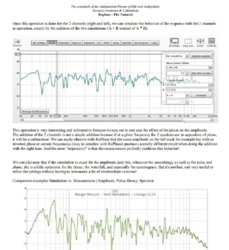Thread Starter
- Joined
- Jan 22, 2019
- Messages
- 115
I've been going through SwissBear's REW measurement averaging + RePhase tutorial and I think I need some coaching for the last couple of steps.
So far I'm quite pleased that I time aligned and vector averaged the nine measurements for each channel. I then continued on and used Lavg and Ravg to generate the appropriate EQ filters
for each channel. Guided by the tutorial I was then able to successfully export both the averaged measurement and correction filters into Rephase for viewing and ultimately generating the correction impulse for each channel.
So quoting from the tutorial, here we are
Generate the corresponding correction impulse and import it inside REW and apply the
convolution of this correction to the averaged measurement:

I think the next step is to use "Trace Arithmetic" create A*B?

Which produces the following.

So far so good?
Regards,
Dan
So far I'm quite pleased that I time aligned and vector averaged the nine measurements for each channel. I then continued on and used Lavg and Ravg to generate the appropriate EQ filters
for each channel. Guided by the tutorial I was then able to successfully export both the averaged measurement and correction filters into Rephase for viewing and ultimately generating the correction impulse for each channel.
So quoting from the tutorial, here we are
Generate the corresponding correction impulse and import it inside REW and apply the
convolution of this correction to the averaged measurement:
I think the next step is to use "Trace Arithmetic" create A*B?
Which produces the following.
So far so good?
Regards,
Dan













